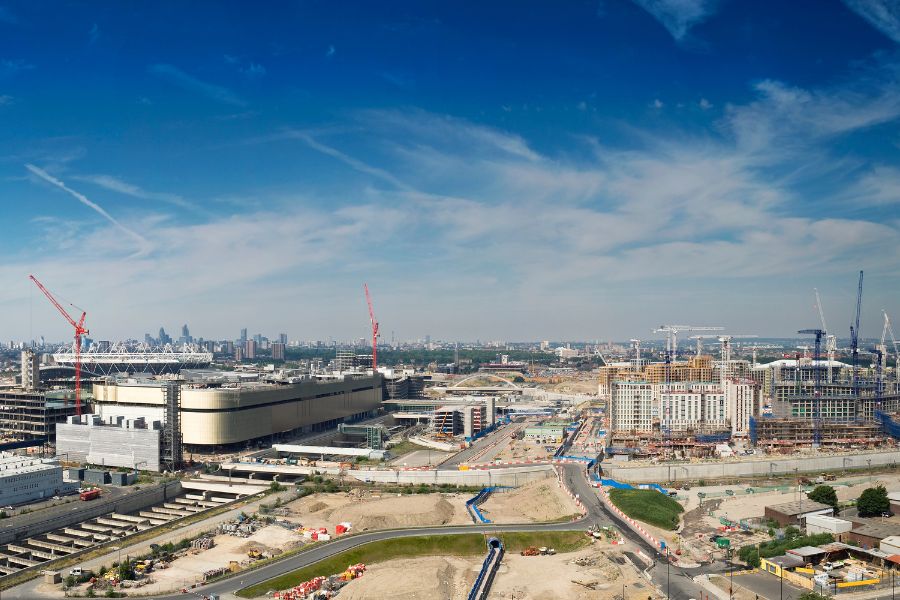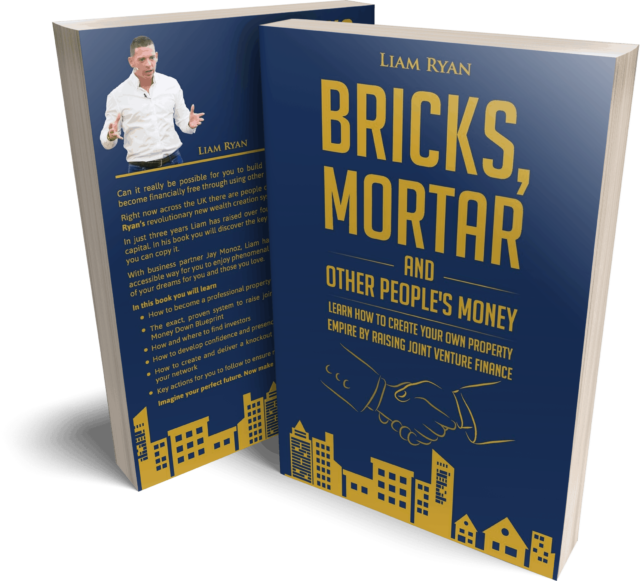Guide: Urban Regeneration and Its Impact on the UK's Property Market

Urban regeneration seems to be more and more common, and it is a popular talking point of property investors, developers and local authorities. But what does it mean, and how does urban regeneration affect the property market? Read this ultimate guide further, as I discuss urban regeneration and what it could mean for property investors.
Table of Contents
ToggleWhat is Urban Regeneration?
Urban regeneration, also known as urban renewal, is the practice of investing in deprived areas to create homes, workplaces and amenities in locations that are derelict, underused or otherwise not meeting their potential. These initiatives aim to improve the economic activity of an area, offer a better quality of life to residents, and improve the infrastructure with essential developments like transport links, schools and hospitals. Urban regeneration projects are often funded and led by local councils and private firms, or a combination of both. The UK’s largest cities have benefitted from urban regeneration, such as Liverpool’s Knowledge Quarter and LiverpoolONE, Manchester’s Media City, and London’s Thamesmead. There are 3 main types of urban regeneration:
Economic Urban Regeneration
Economic urban regeneration aims to improve an area’s business growth, encouraging more business startups, enticing established businesses to open an office or premises there, and creating more jobs in the area, leading to increased earnings. This is frequently done by adding commercial buildings for business use, improving local transport links, and creating appealing housing options nearby for business employees.
Social Urban Regeneration
Social urban regeneration refers to developments that benefit the local community. This could be in the form of enhancing access to healthcare and education as well as providing arts and culture spots such as museums and galleries. Social urban regeneration aims to improve the health and well-being of residents
Environmental Urban Regeneration
Environmental urban regeneration aims to improve the local environment of an area by adding green spaces like parks and nature reserves, managing local green belt areas, increasing local biodiversity, and developing more sustainable local travel options with cycle paths and public transport options.
What Are The Benefits of Urban Regeneration?
Urban regeneration offers numerous benefits to an area and the surrounding town or city. Top 8 benefits are:
- More homes are available. Urban regeneration creates houses and flats, providing more options for locals and creating more dwellings for an influx of new residents.
- Increased sense of community and pride. If an area is run-down, underused, and lacking in local amenities, it is hard for a functional community to develop or sustain itself. A regenerated area helps foster a sense of belonging, creates stronger community bonds and reduces crime and anti-social behaviour.
- Increase economic growth. Regeneration can provide more jobs, revitalise older industries and introduce new ones to the area, increase the overall resilience of the local economy and attract even more investment over time.
- Preserves local heritage. When done properly, urban regeneration doesn’t erase the past or destroy important heritage sites. An effective urban regeneration project conserves, restores and enhances the historic and cultural assets of an area.
- Improved infrastructure. Regeneration projects often include the development of transport networks and utilities of an area, thus increasing accessibility, connections with other areas, and overall improved quality of life for residents.
- More environmentally friendly. Effective urban regeneration projects in line with the UN’s Sustainable Development Goals incorporate sustainable design principles like energy-efficient buildings, green spaces, renewable energy sources like solar panels and waste reduction measures.
- Improved health and well-being. Urban regeneration projects can improve the health of residents, as well as their quality of life and even increase their life expectancy thanks to easier access to hospitals and medical care, improved living conditions, less poverty and a high standard of living.
- Increased property values. Urban regeneration improves the quality and desirability of an area and offers more property investment opportunities, benefitting homebuyers and investors as well as attracting further investment over time.
The Impact of Urban Regeneration on the UK Property Market
Urban regeneration has numerous effects on the property market, including increased property values in the regenerated areas and those nearby thanks to a ripple effect. Up-and-coming areas that are being developed attract more homebuyers and tenants, leading to higher demand for properties which can boost property sale prices and rental yields. Urban regeneration projects are often focused on impoverished areas and can reduce the disparity between urban centres and rural areas. Regeneration projects bring increased economic activity, attracting investment, creating jobs, and supporting local businesses. This has a spill-over effect on the local housing market, boosting demand for property and driving value appreciation.
How Urban Regeneration will Affect Property Investors?
Thanks to the benefits I explained above, urban regeneration offers many advantages to property investors. As well as providing more properties for would-be investors and local homebuyers, urban regeneration can benefit property investors in these ways:
Higher Rental Yields
More businesses and jobs in an area increase the demand for rental properties as more commuters seek homes close to their workplace. Places with a higher demand for homes can achieve higher rental yields.
Higher selling prices
Property investors who purchase houses in areas that are nearing completion of urban regeneration projects can sell them for a higher price. In fact, a study of property price growth in London’s regeneration areas reveals a consistent increase compared to the borough average, with properties near these zones experiencing a growth premium averaging 2.2% annually.
Capital Growth Potential
Urban regeneration projects lead to significant improvements in the overall attractiveness and desirability of an area. As a result, properties in or near regenerated urban areas tend to experience higher capital growth rates over time when compared to properties in stagnant or declining areas. Smart investors can capitalise on this potential for long-term appreciation.
Access to Government Incentives
You can often access government-funded incentives and subsidies designed to encourage more investment in urban regeneration projects, especially during development. Property investors can take advantage of tax breaks, discounts, grants or other funding programmes to enhance their returns and reduce initial investment costs.
More Development Opportunities
Urban regeneration presents new opportunities for property development and redevelopment such as refurbishment, renovation or new construction projects. Investors can capitalise on these opportunities to maximise returns.
How To Identify Investment Opportunities in Urban Regeneration Areas?
Smart investors can capitalise on urban regeneration to increase the return on their investments and diversify their portfolios. To spot investment opportunities early on and get ahead of the competition, start by doing research on planned regeneration projects, investment commitments, and development plans in towns and cities you are interested in investing in. Analyse market trends, demographic shifts, and economic indicators to identify areas with strong growth potential. Another way to find investment opportunities in urban regeneration areas is to engage with local authorities, council planning departments and development agencies. Attend public consultations, stakeholder meetings, and networking events to stay informed and establish valuable contacts. You can keep an eye out for early signs of regeneration in an area, such as improvements to local infrastructure, private sector investments, and large businesses opening a local branch. These can give you an inside line on potential investment opportunities before local property prices start to increase.
With billions of pounds worth of urban regeneration projects being planned, completed and currently underway, it’s a great time to start your journey of property investment. Start by joining me, Liam J Ryan, and other property investment pros at a FREE Assets For Life property event – sign up here.
You May Also Be Interested In...

Renters Rights Bill 2025: A Landlord’s Guide
Now that the Renters Rights Act has become law, here is what UK landlords must

Best Property Investment Courses in the UK
Discover top-rated UK property investment events, bootcamps, and mentors, including Martin Roberts, Stuart and Scarlette

How to Make a Million Pounds from Property Investing
Discover how to earn £1 million through UK property investing with practical strategies and expert
Featured Property Investment Events & Courses
The Property Deal Packaging Summit
The Property Millionaire Bootcamp
The Serviced Accommodation Bootcamp





